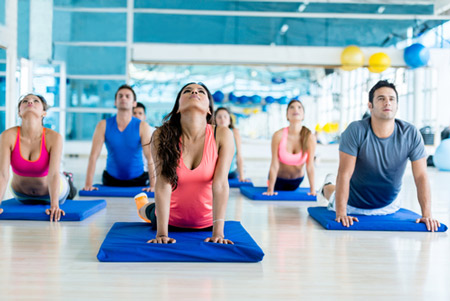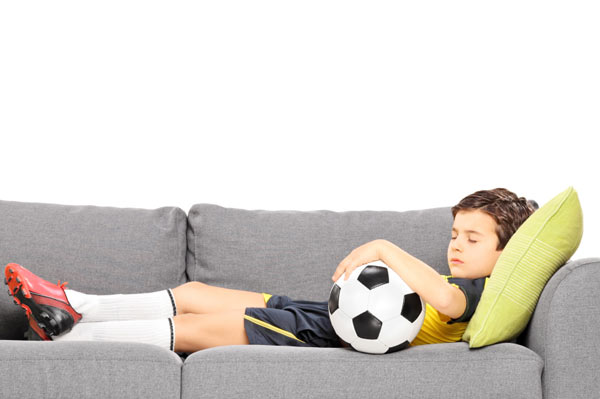How To Help Your Child Prevent Sports Injuries
Posted in:
Sports injuries are a risk to any athlete–regardless of age–the moment they step onto the field or court. Injuries can range from the slight to the severe but almost always mean time taken away from the game, which is something no athlete wants to hear.
When it comes to youth athletes, it’s up to the parents and coaches to teach children how to avoid the risk of injury during games and practices. Teaching kids proper techniques for warming up, stretching, increasing flexibility and working in recovery time can minimize the likelihood, frequency and severity of sports injuries.
Here are a few simple ways to help your child prevent sports-related injuries:
Teach a basic warm-up drill. Explain the importance of warming up in terms kids understand: just like when you turn a video game console on and it needs time to warm up, so do our bodies. Many kids have the urge to get right out on the field, so making warm-up time fun and easy is key.
For example, younger kids might enjoy the challenge of taking turns counting down from 60 seconds during light movement like jogging in place, jumping jacks or marching., while older athletes might enjoy a round-robin style warm-up where each participant has the opportunity to direct a new activity every 30 seconds, which is just enough to get a little heat going.
 Instill the importance of flexibility. Teach kids that flexibility is just as important to their athletic performance as strength and speed. A basic yoga routine can encourage body awareness and improve posture, while allowing creativity of movement.
Instill the importance of flexibility. Teach kids that flexibility is just as important to their athletic performance as strength and speed. A basic yoga routine can encourage body awareness and improve posture, while allowing creativity of movement.
To stretch the spine and ease it gently into activity, move through “cat” position (the body on all fours with a rounded back like a hissing cat) while inhaling, then arch into “cow” (the belly angled toward the floor) on the exhale. Similarly, hold downward-facing dog (feet spaced hip-distance apart with hands on the floor slightly wider than the shoulders and backside in the air to create an inverted “V” shape with the body) for three to five breaths to build upper body strength, release upper back and neck tension and stretch the spine and back.
Ensure kids are equipped with the right protective gear. Young athletes who wear appropriate protective equipment have a better chance of avoiding the most severe types of sports injuries, including broken bones and possible concussions, but to work effectively, the gear must fit the child’s body well. Teach your kids how to properly dress themselves in sports uniforms, including helmets, pads, athletic supporters, protective eyewear, mouth guards and whatever equipment is specific to his or her sport. At the start of each season, perform basic drills at home before the child takes equipment onto the field or court to ensure he or she hasn’t outgrown gear or footwear.
 Schedule recovery time. The American Academy of Orthopaedic Surgeons (AAOS) reports an increase in the prevalence of children’s sports-related injuries to elbows and knees due to repetitive stress on the muscle-bone units, possibly brought on by year-round sports schedules. Despite the level of athletic promise your child might show, his or her bones, muscles, tendons and ligaments are still growing and need time for proper rest and recovery.
Schedule recovery time. The American Academy of Orthopaedic Surgeons (AAOS) reports an increase in the prevalence of children’s sports-related injuries to elbows and knees due to repetitive stress on the muscle-bone units, possibly brought on by year-round sports schedules. Despite the level of athletic promise your child might show, his or her bones, muscles, tendons and ligaments are still growing and need time for proper rest and recovery.
Evaluate your child’s sports participation with an eye toward safety by limiting participation to one sport per season when possible. If they wish to participate in more than one activity, choose complementary sports that allow for cross training and promote balanced skill and strength development. For example, a summer sports schedule with high- and low-impact activities, like baseball and swimming, gives the child’s body more time to develop cross-functional strength versus a year-long soccer routine that moves from indoor to outdoor environments using the same muscle groups.
As you determine how your child will compete, mindfully schedule breaks between seasons to minimize the risk of overuse injuries. Encourage them to adopt a conditioning routine before a new a season so they have time to adapt to a new activity gradually.
Dr. Christopher Good, of Virginia Spine Institute, is a nationally recognized spinal specialist. He is dedicated to getting patients with spinal deformities back to their active lifestyles and is a pioneer in the most advanced operative and non-operative treatment options including minimally invasive techniques and regenerative therapies. If you are looking for treatment or pain management services relating to the spine conditions, there are many options available.
